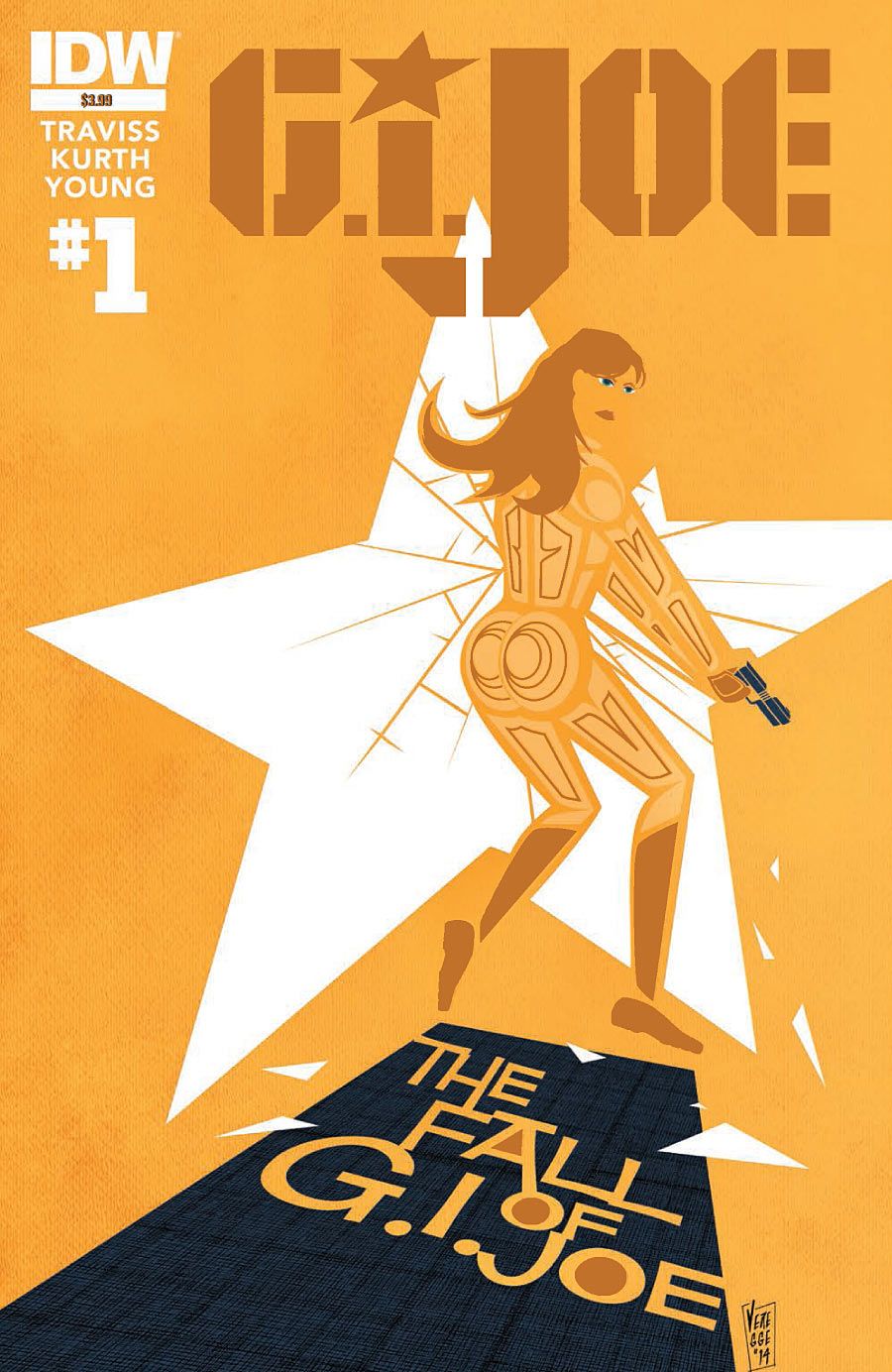Despite dealing with weighty themes like war, imperialism and the future of the armed forces, "G.I. Joe" #1 is puzzlingly boring. Writer Karen Traviss loads the story with plenty of conflict and thought to fuel the issues to come, but her pacing doesn't provide a dynamic experience for this one. Steve Kurth and Kito Young match the slow script with muted artwork that's beautifully composed, but mostly consists of talking heads. Overall, it leaves me with mixed feelings about whether to pick up issue #2.
Whatever my other concerns, Traviss lays strong, bold groundwork. She lets the new face of modern warfare -- budget battles, PR campaigns and covert kills -- frustrate not only the Joes, but the Cobra operatives; this is not only a problem for the experienced fighters, who find their worldviews and skills newly irrelevant, but for the recent recruits, who were promised something more intrepid and exciting than political logistics. By positioning this as a many-faceted, many-faced problem, Traviss gives the story a dozen possible directions and layers. As a promise that Volume 4 has a lot to say, "G.I. Joe" #1 works.
However, more serious subject matter can also drag if it's not handled judiciously. Traviss' pacing undoes a lot of the tension that her material builds up. She jumps between storylines, but she doesn't leave cliffhangers from piece to piece. Now, I don't need snappy lines and pulpy foreshadowing at every transition, but it's difficult to feel anticipation for the next section without any idea of what to anticipate. For instance, the first Cobra scene ends with Tomax Paoli promising a president, "I'll make that point to the media and ensure it's heard in Washington." The next time the reader sees him, though, he's having an ideological discussion with Baroness. While this second scene provides necessary exposition as to how and why Cobra became a peacekeeping force, it doesn't give the story any dramatic build.
The exception here is with Isaac, Siren's son, whose scenes are clearly building to a point of rebellion. Each of his pages ends with a line like, "If we don't take Cobra back from these traitors, it's all been for nothing," or "I need to let my mother know I've deserted. I don't want her to think I got killed peacekeeping." These lines are admittedly a bit more obvious than Traviss' other dialogue, but he has a clear trajectory.
The script also gives artist Steve Kurth a particularly difficult job, as almost every panel he draws is a talking-heads conversation. His style is quite elegant, with some almost Phil Noto-esque faces, and every conversation has clear, active composition. However, in order to vary the look of the issue, he inevitably has to come away from the characters' faces at points, and it can make it difficult to read their emotions. Occasionally, I would wish he'd zoomed out on a less important line, but overall the artwork is lovely. His talent does feel somewhat wasted on the subject matter, and I'd love to see what he could do with more dynamic material in future issues.
Kito Young chooses a sober palette that lets the reader see the graininess of the inks, making the world feel more realistic. He also favors cold, harsh backgrounds, using sandy grays and super-light beige in many of the panels. He does his part to make things feel varied, though, using color to create a sense of change where the nature of the scenes -- yet another conversation -- cannot. He slips from those cold scenes to a red congressional hearing, to a yellow-green control room, to a bruised watercolor of a sunset.
All in all, "G.I. Joe" #1 suffers from very fixable problems. Some issues can create an enjoyable experience with sheer technical expertise, but lack the storytelling risks or material to build a longer series. "G.I. Joe" has the opposite problem, but the team shows enough skill that I'm hopeful it can be fixed going forward.

